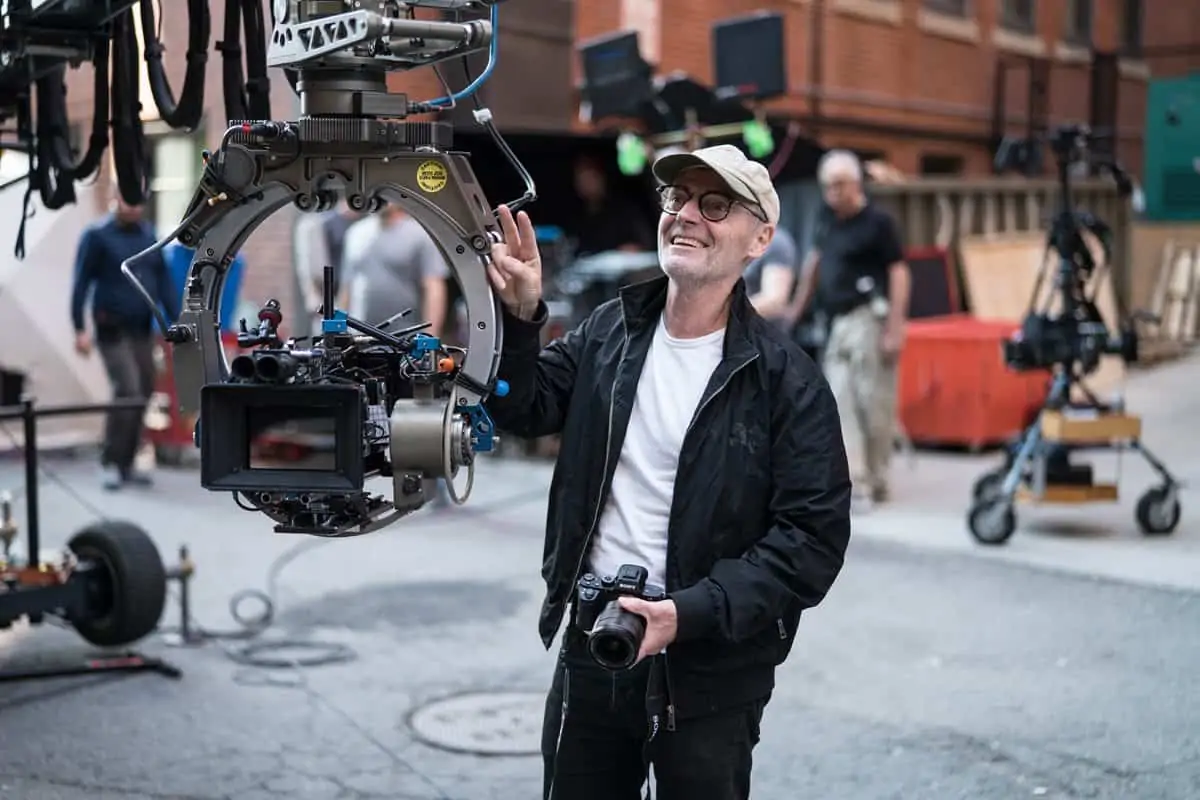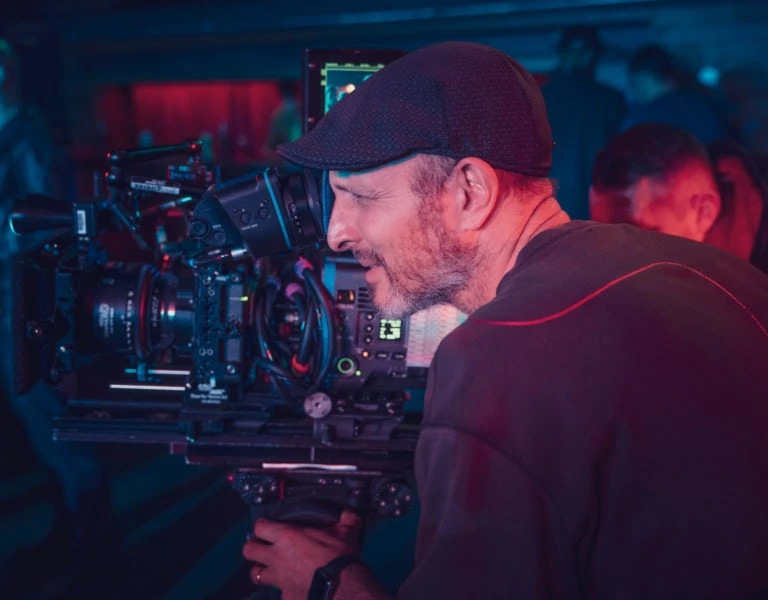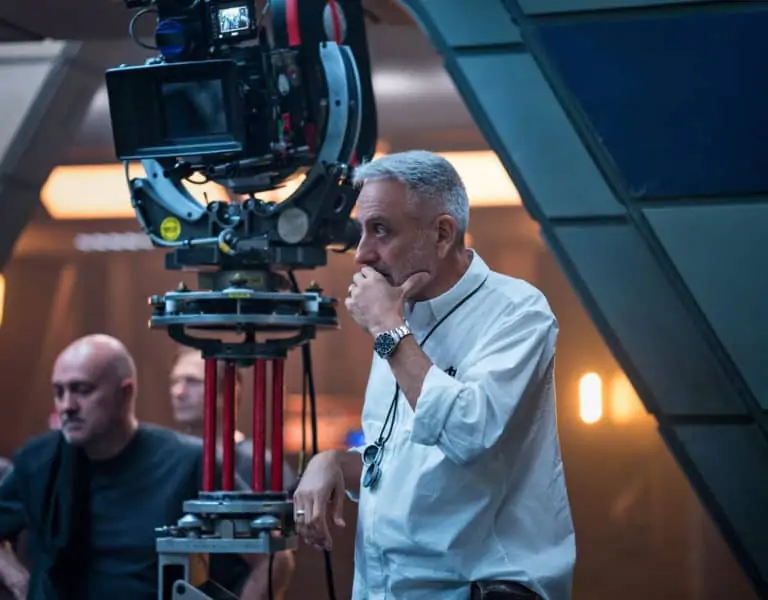Brotherly Love
Dan Laustsen DFF / The Shape of Water
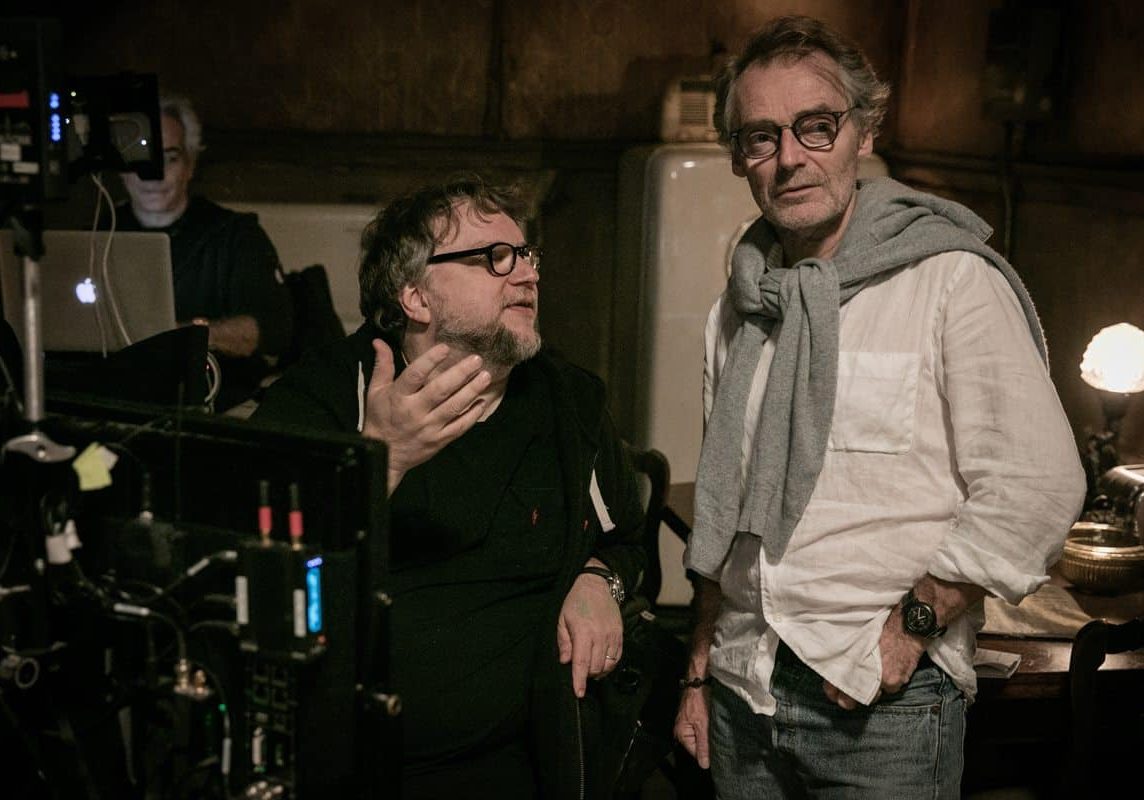
Brotherly Love
Dan Laustsen DFF / The Shape of Water
BY: Trevor Hogg
Mexican filmmaker Guillermo del Toro (Pan’s Labyrinth ) collaborated with Danish cinematographer Dan Laustsen DFF (Brotherhood of the Wolf ) on his English language debut Mimic in 1997 where genetically enhanced cockroaches terrorize a city. Two decades later the creative duo reunited for the gothic sibling horror Crimson Peak.
“It was so weird because we hadn’t seen each other for 20 years but spoke a little bit on the phone now and then,” recalls Laustsen. “I was shooting the television miniseries 1864 in Prague and received a call to fly to Toronto to meet with Guillermo. The first time I saw him was on location and it was like we had been together two hours before.” The rekindled partnership led to the follow-up collaboration The Shape of Water, which revolves around a mute cleaning lady and an amphibian being held captive in a secret government facility. The cast for the romantic fantasy, situated in 1962 Baltimore amongst the paranoia of the Cold War, includes Sally Hawkins, Doug Jones, Michael Shannon, Octavia Spencer, Richard Jenkins, and Michael Stuhlbarg.
“When we were shooting Crimson Peak, Guillermo told me this story about a girl who couldn’t speak who ends up falling in love with a creature,” recalls Laustsen. “I said, ‘That sounds like a Guillermo del Toro movie!’ In the beginning it was supposed to be a black and white movie.” The idea was aborted in favour of colour, which allowed for a greater flexibility with footage and money for what became a $19 million production distributed by Fox Searchlight Pictures was more readily available. Principal photography occurred over 58 days between August and November of 2016 in Hamilton and Toronto, Ontario with the bulk of shooting taking place on sets constructed at Cinespace Studios. “We were together all of the time and talked a lot. Guillermo never makes a master. We’re shooting shot by shot and very much chronologically. You have to be on your toes because you have to come back to the same lighting setup three or four hours later. It’s difficult as a cinematographer but is so great for the performers and for the way he’s plotting the movie.”
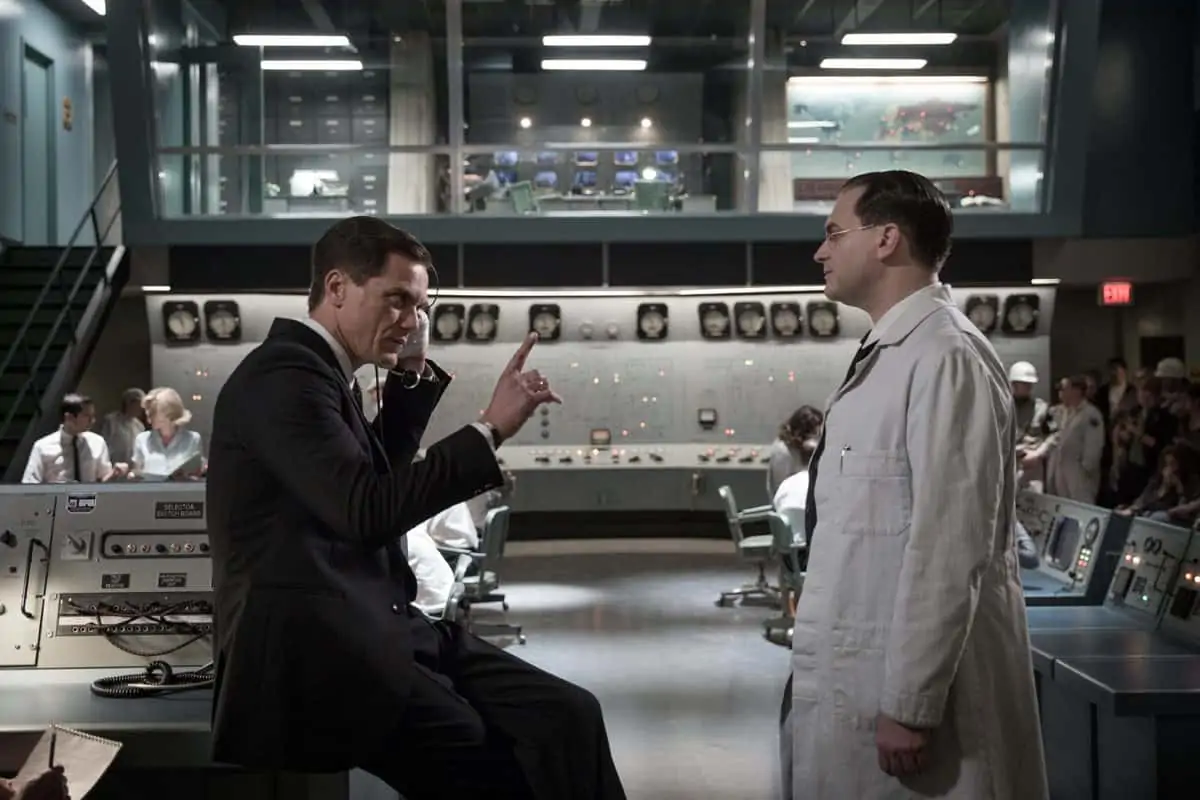
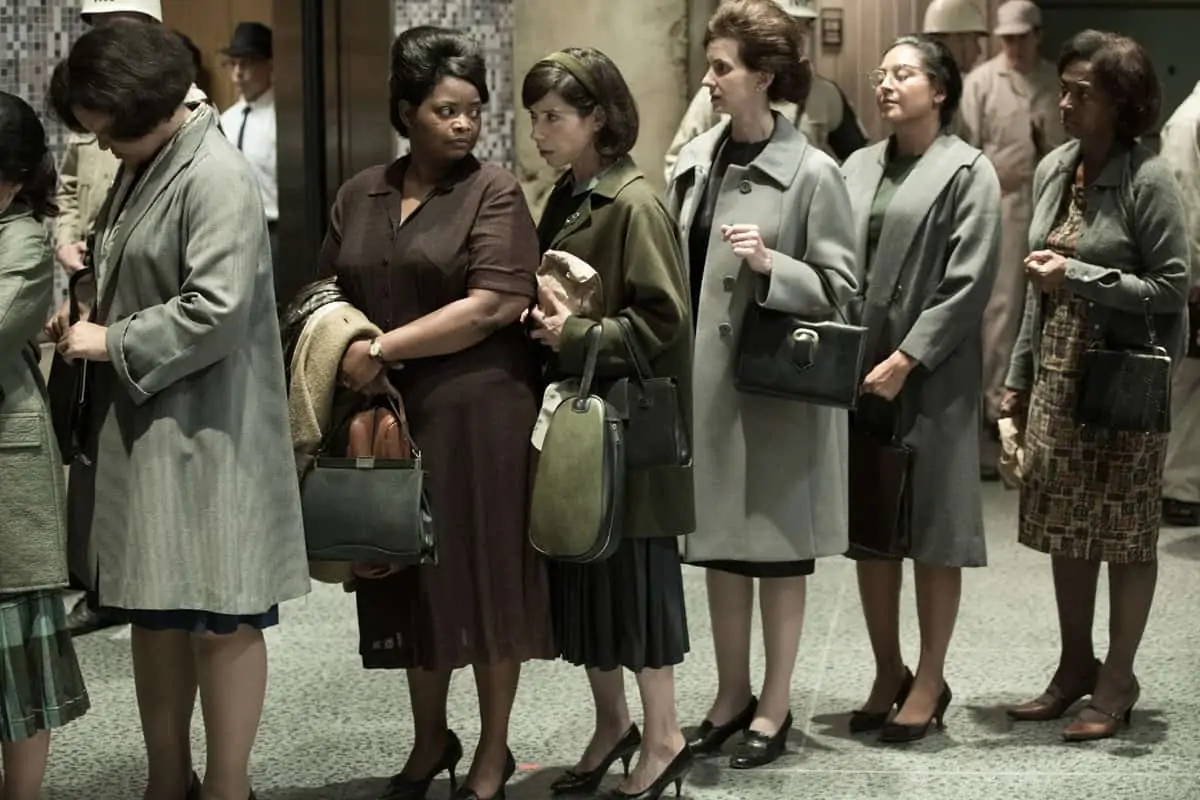
There was no visual research, though parallels can be found with Beauty and the Beast and Creature from the Black Lagoon. The desire was to produce a classic single light source movie where the women look beautiful and men appear to be powerful. Instead of going for flat lighting, shadows were cast on faces for dramatic effect. Lighting and makeup tests were conducted to make sure that Doug Jones looked powerful and gorgeous in the practical creature costume. Rather than a handheld approach, the preference was to utilized Steadicam, jib arm with remote head, and Technocrane with the camera always being in motion. Dan Laustsen and Guillermo del Toro constantly discussed lenses, camera angles and lighting setups. 95 percent of the movie was shot at a 1.85:1 aspect ratio with a single ALEXA XT with Zeiss Master Primes provided by Panavision Toronto.
“We shot 3.2K open gate,” notes Laustsen. “The bathroom is shot wet for wet so we used an ALEXA Mini.” Elisa and the creature falling into the river was shot dry for wet with a lot of smoke, cranes, wires and projectors for caustic lighting. “I like Master Primes because you know what you’re getting. We went for wide angles and shoot a lot with 25mm and 27mm. We were afraid of the female actors getting too sharp so I shot with a diffusion filter inside of the camera to breakup the highlights.”
William F. White supplied the grip and lighting equipment that consisted of LEDs being controlled by a large dimmer board while 18K and 24K lights were shone through windows to emulate sunshine in the studio. 4x4 panels assisted in the creation of a soft and beautiful lighting for the close-ups. “90 percent of the movie is stage such as the lab and the apartments of Elisa (Sally Hawkins) and Giles (Richard Jenkins),” remarks Laustsen. “This was not a big budget movie so we couldn’t afford to put catwalks around the set [which made lighting adjustments more difficult].”
The finale at the waterfront was tricky. “In the beginning we had the idea of shooting a 1000 fps and you need a lot of light. Our problem there was it was so cold that we had to rain hot water for actors. When hot water hits the rain deflectors [for the camera] it gets misty. We had a lot of rain issues. Shooting had to stop for a day because we had a thunder storm passing by with insane rain that was going sideways!”
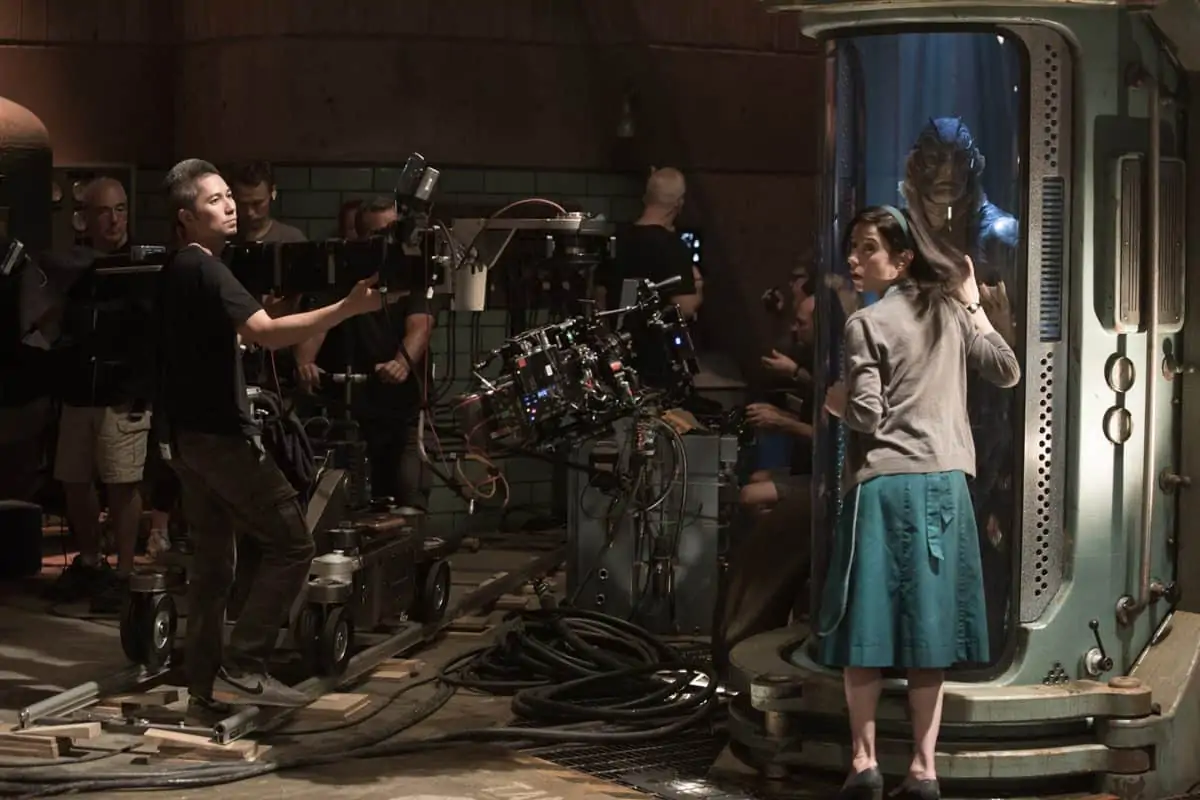
Crew members featured gaffer Tom Starnes, key grip Robert Johnson, A camera operator Gilles Corbeil, 1st AC John Harper, B camera operator J.P. Locherer and B camera 1st AC David Nardi. “99 percent of all the lights on this show ran through the dimmer board with 85 percent of them being LED in one form or another,” remarks Stairnes. “From Arri to Kino, we used almost all of their available inventory styles from S60’s and 30’s to Kino Q401’s and 201’s.”
Going from set up to set up was not the easiest as most scenes involved intricate lighting setups with complicated camera moves. “My console operator Desiree Lidon was saving grace in more ways than I can imagine; her skill set in programming every light and every level of every light from each scene to every take on every scene was so essential to the show. The biggest challenge by far was the addition of all the water on almost every level, from getting drenched daily on exterior locations to torrents of water pounding lights on the stage. Water and electrical gear don’t mix well while water and LED mix even less.”
“Yes, the rain,” remarks B camera 1st AC David Nardi. “There was a lot of it! Even if it was already raining we would do our part and add more. Generally, a large clear plastic bag is enough to protect the camera from rain. Because we used rain towers, and could shut them off, it was quicker and easier to manage the camera between takes than if it was raining for real. Everything slows down when working with rain and sensitive electronics. The SFX department warmed up the water by a few degrees for the actors. This caused our lenses and filters to fog up fairly quickly during takes. The solution was to open up the bottom of the bag underneath the camera for ventilation. Soon after we added those personal-sized handheld cooling fans to the camera’s rods underneath the lens. We used some strong elastic bands to mount it so it would blow up towards the lens and filters. The circulation of air kept the lens clear. We also used a spinning rain deflector in the mattebox to keep the rain from settling on the filters/lens and being photographed.”
![LAUSTSEN PUBLICITY PHOTO 2017[29518] LAUSTSEN PUBLICITY PHOTO 2017[29518]](https://britishcinematographer.co.uk/wp-content/uploads/2017/12/LAUSTSEN-PUBLICITY-PHOTO-201729518-e1512555722235.webp)
"We were together all of the time and talked a lot. Guillermo (Del Toro) never makes a master. We’re shooting shot by shot and very much chronologically.You have to be on your toes because you have to come back to the same lighting setup three or four hours later.
It’s difficult as a cinematographer but is so great for the performers and for the way he’s plotting the movie."
- Dan Laustsen DFF
“This film was completely different from any other that I've been involved in,” notes B camera operator J.P. Locherer who also served as a cinematographer for the second unit. “My biggest challenge was to be ready to jump in at any time as most of the film was one camera setups. Gilles and John did the heavy lifting but David Nardi and I got to play on several scenes and are thrilled to see our work in the film. The scene I want to see again is Michael Shannon driving his brand-new dream car. The reason for this is selfish as I was the DP on that! We didn't have a lot of time but that magic hour shot worked because the Russian Arm guys delivered as always but also David and Courtney gave their time off to help me with a light study so that we would be fully prepared.”
“Once in a while we would perform a two-camera setup but there was generally one camera angle that works best for lighting, eyelines, composition and the performance,” states Nardi. “These were clearly defined frames that told just what Guillermo wanted to say.” The camera was rarely static. “Because of this we had three primary modes of ‘transportation’ for the camera. Cameras were built and ready to go on Steadicam; an Aerocrane jib arm mounted on a Fisher dolly; and a Technocrane. There were several days where they broke our camera off onto a second unit or a splinter unit to shoot the remaining parts of a scene or short little scenes. On these days we would use even more unique rigs to keep the camera moving: Exo carts [fast modified electric go-carts with a jib arm on it], drones and a Russian Arm. Every day I would be responsible for building Gilles’ Steadicam and I made sure that the other cameras were in their required build for the scenes or shots as needed. This left John Harper and Gilles plenty of room to focus on the shot at hand with little technical tinkering. Swapping from one camera to another was a quick process.”
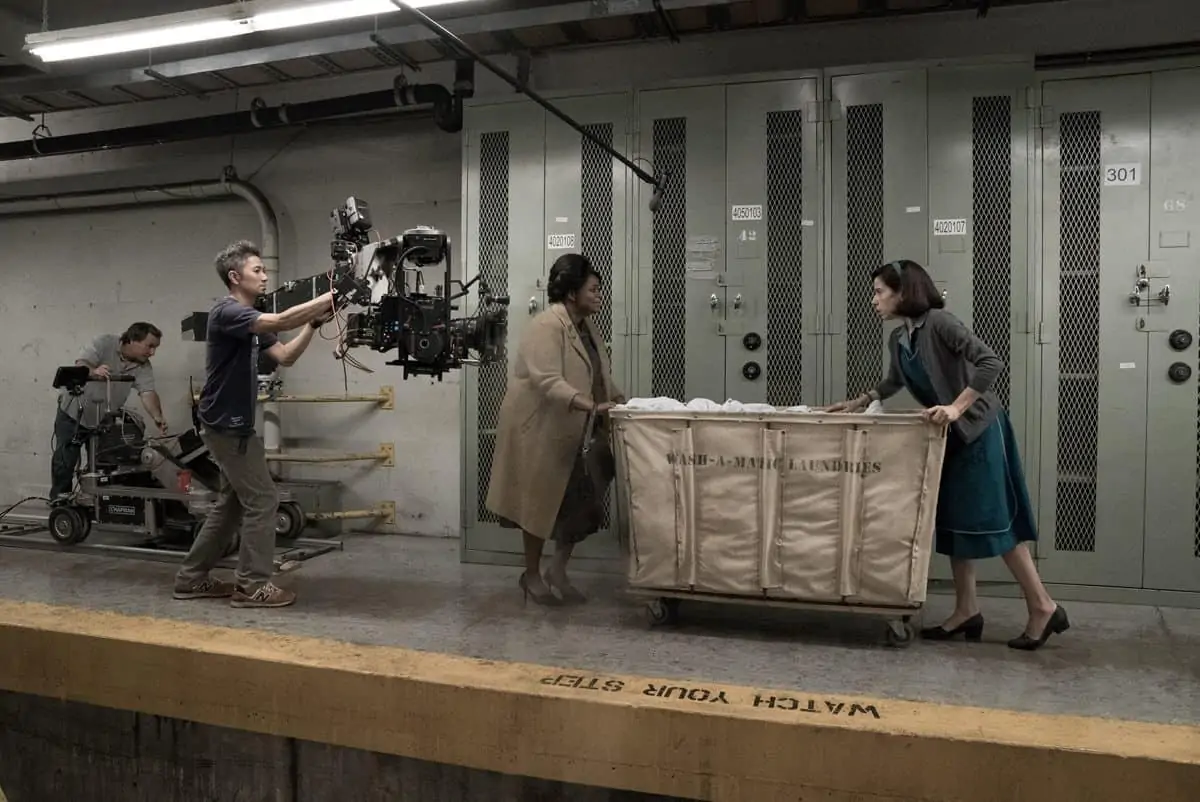
“All the way back to Mimic, Guillermo and I fell in love with steel blue and greens,” observes Laustsen. “There are only two places in the movie where we are using red and that’s when Elisa is falling in love with the creature. The whole colour pallet is green bluish and we talked to the production designer, Paul Austerberry so that the walls were being painting the right colours. We worked closely with him and costume designer Luis Sequeira so the pallet of colours was strong and worked well together.”
Chris Wallace at Deluxe Toronto looked after the DI. “We did everything in-camera with a DIT on the set. That’s an important process when you’re shooting digital because then you’re getting all of the dailies to the studio and into the editing room so everybody knows exactly how the movie is going to look.”
“Dan sent RAW data from the camera to the DIT station for on-set grading,” explains Nardi. “Our DIT, Gautam Pinto, then sent the ‘look’ back out via LUT boxes attached to each camera. This actually aided the focus pulling. Since the green colour palette was more of a finished image it was easier to gauge focus. The added contrast and saturation definitely help to reveal the focus plane. A RAW output is flat and low-contrast by comparison making it harder to tell. That being said, taking old-school tape marks is the best way to understand the space you’re in and allows you to respond faster than a monitor or Cinetape can provide. Sometimes the only way to focus is with a monitor but often there are plenty of opportunities to pull out the tape measure. I always take that opportunity when possible. The monitor is more of a finishing touch. If an actor walks around or leans forward, I use marks for that. When they settle and make minor adjustments those are generally tweaked via the monitor. I believe your hit-miss ratio climbs more towards ‘hit’ when using marks.”
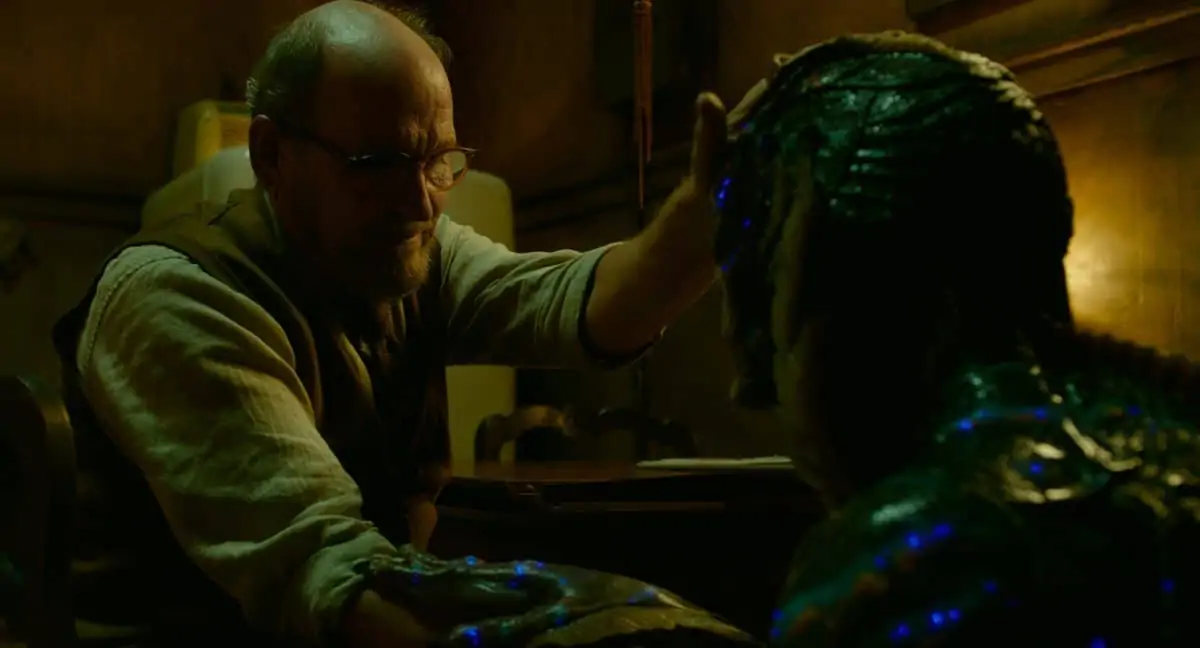
Not everything appears in colour, as was the case with the musical number between Elisa and the creature. “That’s shot in colour with the ALEXA XT and then we pulled the colours out in post to make it black and white,” reveals Laustsen. “We shot that in three quarters of a day. Because the schedule was so tight we didn’t have a huge amount of time to shoot each scene. We pre-lit that the day before and shot it with a Technocrane.” A camera operator Gilles Corbeil explains, “We would fly tables, chairs and off-camera often. Ron Renzetti, the A cam dolly grip would set up the aero crane/dolly on dance floor and we would often shoot rehearsals with John Harper 1st AC winging it. We would have to remember the path the camera made and where we were in a scene to complement coverage. A lot of the work was in tight, in close two to three feet, putting pressure on Dan to get a seamless look. Everything had to be prepared in slow exact timed paths.”
“The climax scene where Michael Shannon interrogates Michael Stuhlbarg at a rainy sand pit ended up in my hands,” explains Nardi. “That was one of the scenes I got to do with Gilles. It was all Technocrane and the camera constantly moved around making the shots unpredictable. Michael Shannon typically changed up his performance from take to take and the camera was never in the same place twice. He would walk away from the camera at 12 to 15 feet then suddenly lunge forward into a 3 feet close-up. It was certainly the most challenging sequence of shots I’ve done in a long time. When we were rolling it was just me, the actors, and the camera. The rain washed away the rest of the set and really helped me to ‘focus’ on focus! I really had to pull all my tricks out of the bag. Taking my best guess of distance and almost turning the focus wheel on a ‘feel’, as silly as that may sound, worked wonders. It could have easily gone the other way. Dan, Gilles, John, JP, and Gautam were all congratulatory afterwards. It meant a lot to me.”
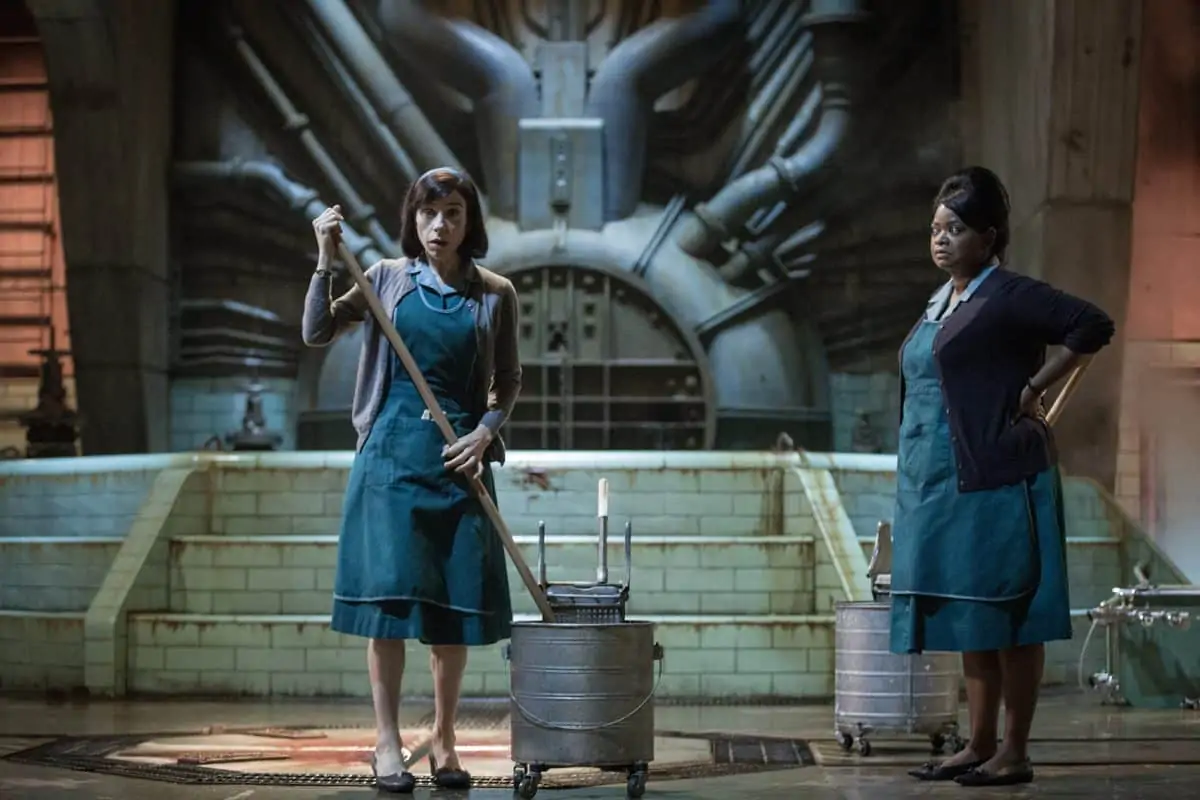
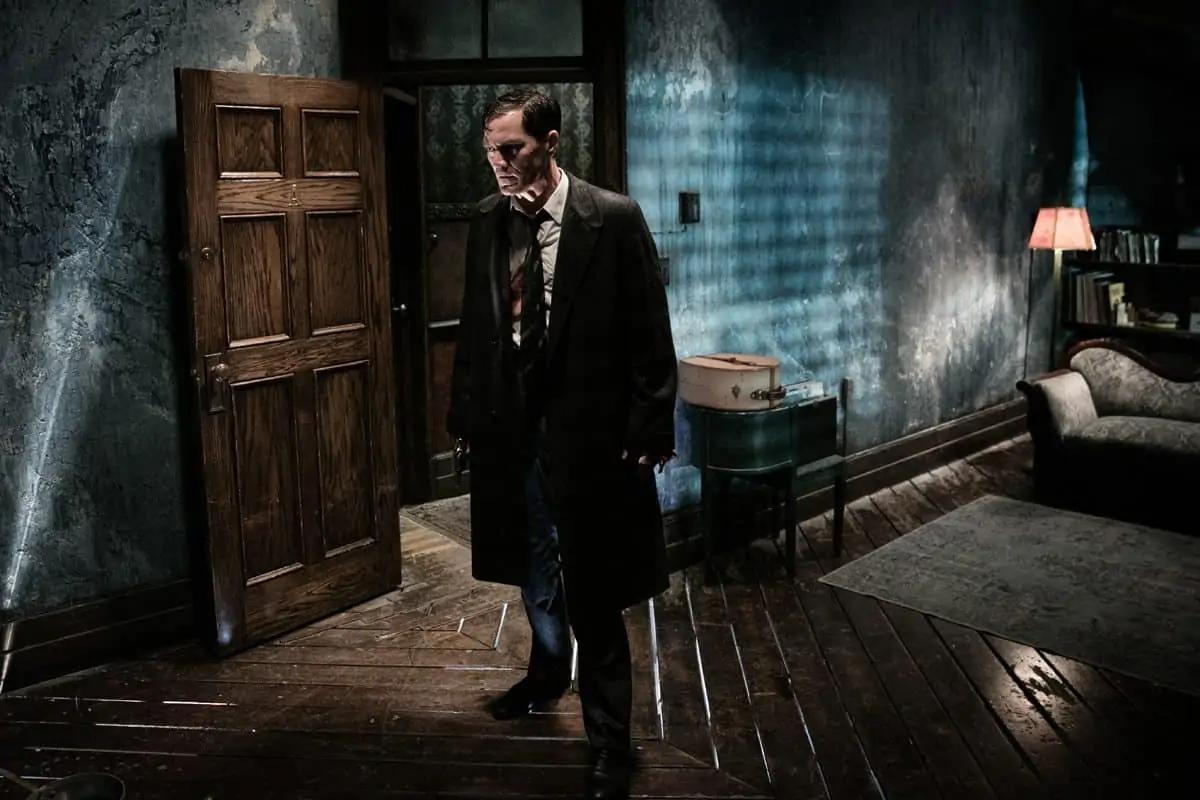
The unconventional sex scene is a proud moment. “What I like is when Elisa decides to go back to the bathroom with the creature. She is walking out, standing at the door, going back in and cutting to that underwater sequence. That’s gorgeous because they are falling in love with each other there.” The screening at the 2017 Toronto International Film Festival took place at the Elgin Theatre, which also appears in The Shape of Water. “The biggest challenge there was to get the Technocrane inside because there was no space. Then we put a big lighting rig over the screen because Guillermo wanted to have this feeling that light is coming from it. Unfortunately, I was not there but I heard that everyone was pleased about the screening.”
Festival and awards circuit buzz is growing for The Shape of Water, which won the top prize at the Venice Film Festival. “I was proud before that because when I shot the movie I was so happy about the look. I love Guillermo from a deep heart. He’s a fantastic film director and loves what’s he’s doing. Guillermo is always on the set and prepared. He’s talking about the movie all of the time and is editing between when I’m lighting. Guillermo is so much a filmmaker in the old fashion way and inspires everybody around him.”
(All images included by Kerry Hayes. © 2017 Twentieth Century Fox Film Corporation)







